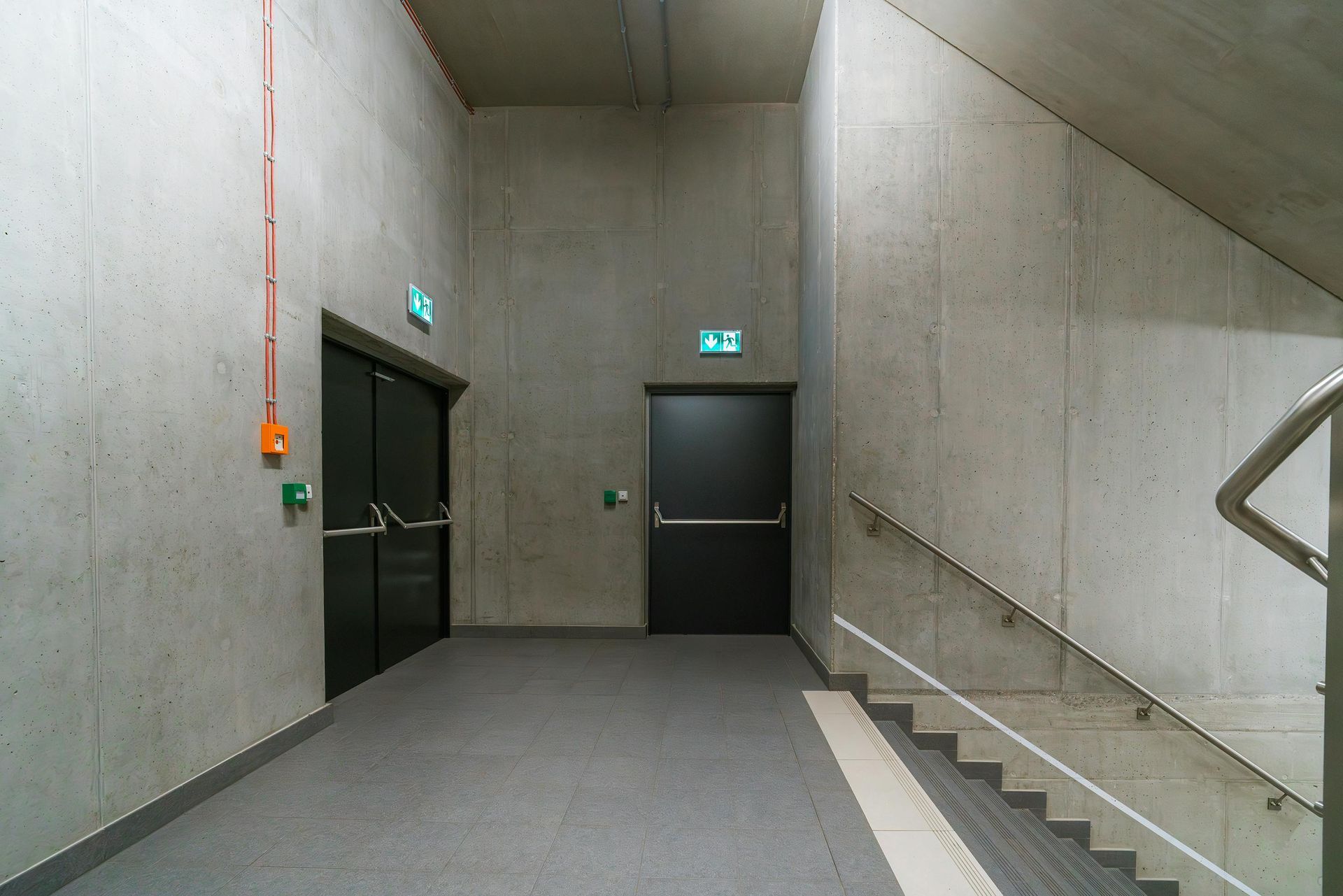Facilities Management Made Simple: Everything you need to know about Fire Doors
How Facilities Management Can Help You With Your Fire Doors
Fire doors are critical safety features designed to prevent the spread of fire and smoke within buildings, ensuring safe evacuation routes and protecting property. In the UK, fire door regulations and laws are stringent to maintain high safety standards. Facilities managers play a crucial role in ensuring that fire door safety standards and legal requirements are met consistently. Their proactive involvement can significantly enhance fire safety within buildings and contribute to compliance with fire safety regulations.

What Are Fire Doors?
Fire doors are specialised doors built with fire-resistant materials and equipped with components like intumescent seals and self-closing mechanisms.
Their main functions are:
- Compartmentalisation: Restricting the spread of fire and smoke to other parts of a building.
- Protection: Safeguarding escape routes (e.g., corridors, staircases) for safe evacuation.
- Structural Integrity: Providing extra time for emergency services to control the fire.
Key Components of Fire Doors:
- Fire-Resistant Core: Typically made from solid timber or composite materials.
- Intumescent Strips: Expand when exposed to heat to seal gaps and prevent smoke passage.
- Self-Closing Mechanism: Ensures the door is always closed, maintaining the fire-resistant barrier.
- Smoke Seals: Prevent smoke from passing through door edges.
- Fire-Rated Glazing: Fire-resistant glass for doors with windows.
Fire Door Ratings
Fire doors are rated based on how long they can withstand fire, indicated by the following classifications:
- FD30: Provides 30 minutes of fire resistance.
- FD60: Provides 60 minutes of fire resistance.
Higher ratings (e.g., FD90, FD120) offer longer protection times but are less commonly used in standard commercial or residential applications.
Legal Framework for Fire Doors in the UK
The regulation and use of fire doors in the UK are governed by multiple laws and guidelines, including:
Regulatory Reform (Fire Safety) Order 2005 (RRO) & The Fire Safety Act 2021
Purpose: The primary legislation covering fire safety in non-domestic premises.
Responsible Person: Under the RRO, the 'responsible person' (e.g., building owner, employer, landlord) must ensure that fire safety measures, including fire doors, are adequately installed, maintained, and operational.
Duties:
- Conduct risk assessments.
- Maintain fire doors in good working order.
- Ensure regular inspections and maintenance of fire safety equipment.
Building Regulations 2010 (England and Wales)
Approved Document B (Fire Safety): Sets out specific guidelines for the installation of fire doors within buildings.
Requirements:
- Fire doors must meet specific fire resistance standards (e.g., BS 476 or BS EN 1634).
- Proper signage and clear marking of fire doors (e.g., ‘Fire door – keep shut’ signs).
- Fire doors used in certain areas like stairwells and communal hallways must be certified for the designated time.
British Standards (BS)
BS 476-22: Details testing methods for fire resistance.
BS EN 1634-1: European standard for fire resistance testing of door sets and shutters.
How can Facilities Management help?
Regular Inspections and Maintenance
Scheduled Checks: Implement a regular inspection schedule to check the condition of all fire doors. This includes ensuring doors close properly, seals are intact, and there are no visible signs of damage.
Log Inspections: Keep detailed records of each inspection, noting any issues and actions taken to remedy them.
Prompt Repairs: Address any issues immediately, such as replacing worn-out intumescent seals or fixing self-closing mechanisms that aren’t functioning properly.
Compliance and Certification
Ensure Certification: Verify that all fire doors in the facility are certified and meet relevant British Standards (e.g., BS 476, BS EN 1634).
Check Labels and Plugs: Make sure fire doors have certification labels or plugs, typically located on the top or side of the door.
Stay Informed: Keep up to date with changes in legislation, ensuring the facility complies with the latest fire safety laws, such as the Fire Safety Act 2021 and Building Safety Act 2022.
Communication with Tenants and Occupants
Awareness Campaigns: Run awareness programs for tenants or building users that highlight the purpose of fire doors and how they contribute to safety.
Signage: Ensure clear and appropriate signage is placed on fire doors, such as ‘Fire Door – Keep Shut’ or ‘Fire Exit – Keep Clear’ signs.
Feedback Mechanisms: Establish channels (e.g., email or an online portal) where building occupants can report issues or concerns related to fire doors.
Collaborate with Fire Safety Experts
Sub-Contract Qualified Inspectors: Partner with certified fire safety professionals to conduct detailed inspections or provide third-party verification of fire door condition and compliance.
Consult on Upgrades: Work with experts when upgrading or installing new fire doors to ensure compliance with current regulations and best practices.
Audit Assistance: Use external auditors to periodically review the building’s overall fire safety measures, including fire doors.
Routine Preventative Maintenance
Hinge and Frame Checks: Regularly inspect hinges, frames, and other structural elements to ensure there’s no warping or misalignment that could affect the door’s performance.
Closing Mechanism Tests: Test self-closing devices to confirm they are working smoothly and that doors close fully without any obstruction.
Seal Inspections: Verify that intumescent strips and smoke seals are in place and not damaged or worn.
Maintain Compliance Records
Documentation: Keep records of all maintenance, inspections, repairs, and training related to fire doors.
Certification Proof: Have certificates and compliance documentation readily available for regulatory inspections or audits.
Risk Assessment Updates: Regularly update fire risk assessments to include any changes to the building layout or the installation of new fire doors.
Conclusion
By adopting a comprehensive approach that includes regular inspections, training, collaboration, and investment in technology, facilities managers can ensure fire doors remain an effective component of a building’s fire safety strategy.
If you would like to discuss the inspections of your fire doors, SEFM are proud to offer facilities management services across the UK; if you need any help with your facility, fill out our form by clicking here and a member of our team will be happy to assist you!


